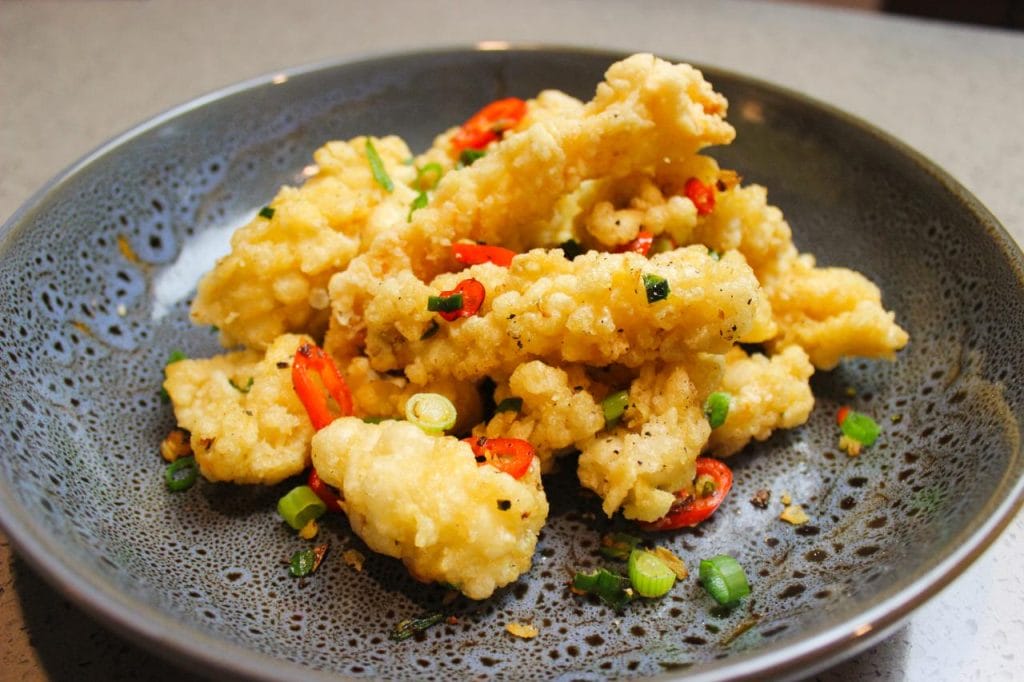Ever wondered why the Salt and Pepper Squid has been such a perennial favorite in seafood-loving circles worldwide? This article aims to explore just that. Ditch your aprons for now, because we won’t be delving into recipes but focusing on cooking tips, serving suggestions, FAQs, and more.
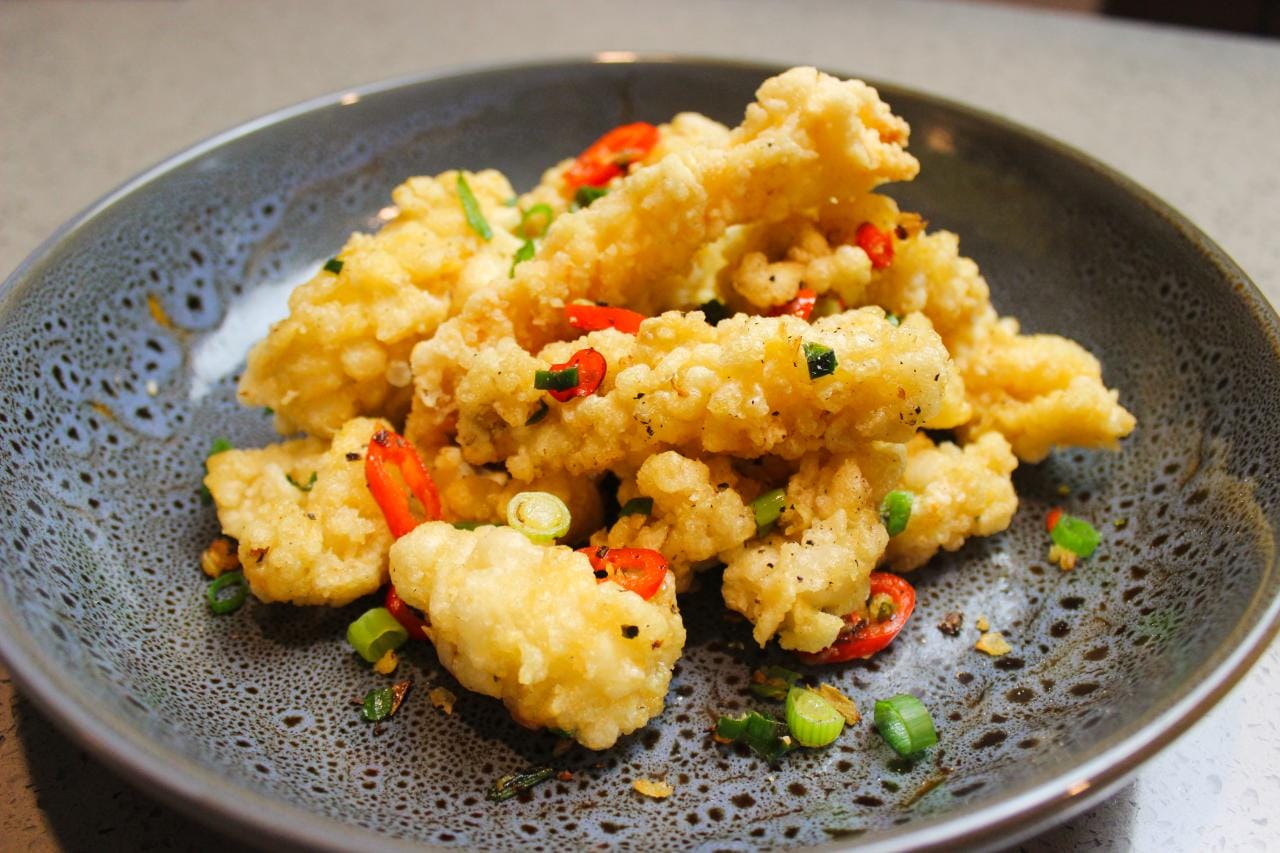
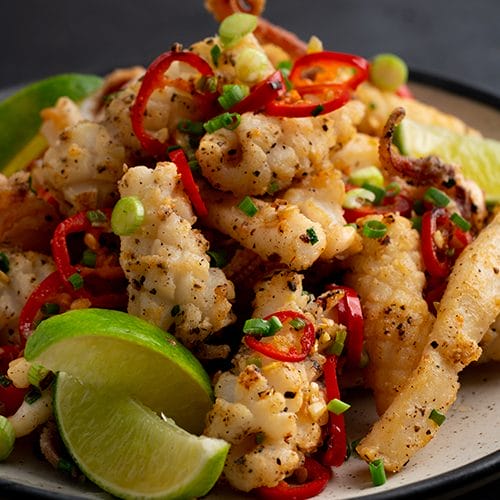
Salt and Pepper Squid
Equipment
- 1 wok or pot
- paper towels
- 1 bowl
- 1 plate
Ingredients
- 1 1/2 pounds squid washed, cleaned, cut in uniform bite-size pieces
- 1 tablespoon rice wine
- 1/2 teaspoon sesame oil
- Cooking oil for deep-frying
- 1/2 cup all-purpose flour
- 1/2 cup semolina flour
- 1/3 cup plain cornmeal
- 1 teaspoon salt or to taste
- White pepper to taste, preferably freshly-cracked
- 1 tablespoon cooking or peanut oil or stir-frying
- 2 teaspoons ginger minced
- 5 cloves garlic sliced
- 2 long hot green peppers cut lengthwise and thinly sliced
- Cooked rice for serving
Instructions
- Drain and dry the cleaned, cut squid with paper towels.
- Combine the wine and sesame oil in a bowl. Marinate the squid for about 5 minutes.
- Heat the oil for deep frying to 325°F in a wok or pot. The oil should be about 4 inches deep.
- In a bowl, combine all-purpose flour, semolina flour, cornmeal, salt, and white pepper, and set aside.
- When the oil is at the right temperature, gently squeeze the liquid from the squid and dredge it in the flour mixture.
- Use a spider strainer or long handled sieve to lower the squid into oil, and fry until golden brown, 2-3 minutes.
- Drain the squid on a plate lined with paper towels, and sprinkle with more white pepper.
- Heat a clean wok over high heat. Add the tablespoon of oil and ginger. Cook until fragrant.
- Stir in the garlic, and cook until lightly golden.
- Add the peppers and stir-fry 30 seconds more.
- Stir in the squid to heat through and to absorb the flavors, about 1 minute.
- Serve hot over rice.
Video
Notes
Cooking Tips

Creating the perfect Salt and Pepper Squid is an art that requires a blend of culinary skills, knowledge, and a keen eye for detail. Here’s a comprehensive guide to help you master this dish.
Selecting the Squid
The journey to a perfect Salt and Pepper Squid begins at the market. When choosing squid, always opt for fresh over frozen. Fresh squid has a sweet, delicate flavor and a tender texture that frozen squid often lacks. Look for squid with clear, shiny eyes and a pleasant sea-like aroma. Avoid those with a strong fishy smell as it’s a sign of spoilage.
Prepping the Squid
Once you’ve got your hands on the perfect squid, it’s time to prep it. Cleaning the squid thoroughly is crucial. Remove the head, tentacles, ink sac, and internal parts. Rinse under cold water to remove any residual grit.
For an extra tender texture, score each piece lightly in a crisscross pattern before cooking. This not only helps in faster cooking but also allows the flavors to penetrate deeper into the squid.
Crafting the Perfect Batter
The batter plays a significant role in achieving that golden, crispy exterior that is characteristic of Salt and Pepper Squid. A combination of cornstarch and all-purpose flour usually works well. The cornstarch helps create a light, crispy coating, while the flour gives it body.
Ensure the batter isn’t too thick or too thin. A thick batter will result in a heavy, doughy coating, while a thin batter might not stick to the squid properly. Aim for a consistency similar to pancake batter.
Seasoning the Squid
The seasoning is what gives Salt and Pepper Squid its signature flavor. Don’t be shy with the salt and pepper – they should be the stars of the show. Using freshly ground pepper can make a significant difference in the flavor profile.
Feel free to experiment with different types of pepper, such as white pepper or Szechuan pepper, for an exciting twist. You can also add other spices like garlic powder, paprika, or cayenne pepper to elevate the flavors.
Frying the Squid
The final step in crafting the perfect Salt and Pepper Squid is frying. The oil temperature is crucial here. If it’s too hot, the squid will burn on the outside without cooking properly on the inside. If it’s too low, the squid will absorb too much oil and become soggy.
Aim for a temperature of around 180°C (350°F). Fry the squid in small batches to avoid overcrowding the pan, which can lower the oil temperature. The squid should be cooked until it’s golden brown and crispy, which usually takes about 2-3 minutes.
Remember, squid cooks quickly, and overcooking can result in a rubbery texture. So, keep a close eye on it!
Serving Salt and Pepper Squid: An Artful Presentation
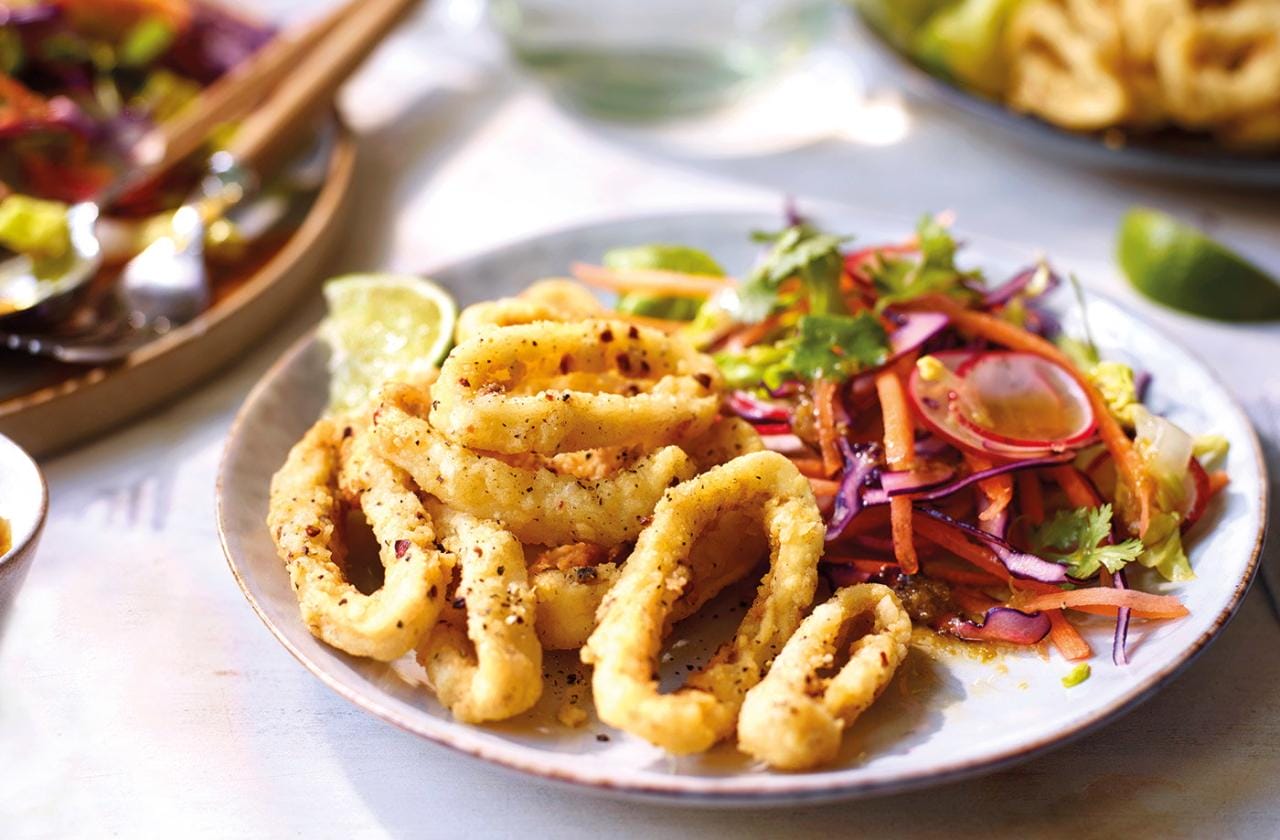
Serving Salt and Pepper Squid is not just about placing the dish on a plate. It’s about creating an appealing visual that complements the dish’s tantalizing flavors, making it a feast for both the eyes and the palate. Here’s a detailed guide to help you serve this seafood delight in style.
Plating the Squid
The first step in serving Salt and Pepper Squid is plating. The way you arrange the squid pieces can significantly impact the overall presentation. Opt for a shallow bowl or a wide plate with a slight rim. This will give you ample space to arrange the squid pieces elegantly without them looking crowded.
Place the squid pieces in a way that showcases their golden-brown color and crispy texture. You could arrange them in a circular pattern or pile them up in the center for a more rustic look.
Adding Color and Texture
Once you’ve arranged the squid, it’s time to add some color and texture. Sprinkle some freshly chopped spring onions or parsley over the squid. Not only do they add a pop of color, but they also provide a fresh flavor that complements the rich taste of the squid.
You could also add some thinly sliced red chili for a hint of heat and a vibrant red color. If you want to add a bit of crunch, consider sprinkling some crushed peanuts or sesame seeds.
Choosing the Right Accompaniments
Salt and Pepper Squid is a versatile dish that pairs beautifully with a variety of accompaniments. A tangy dip, such as a sweet chili sauce or a soy-based dipping sauce, can enhance the dish’s flavors. Place the dip in a small bowl on the side, so your guests can adjust the amount to their liking.
For a wholesome meal, serve the squid with a side of steamed jasmine rice or stir-fried vegetables. The mild flavors of the rice or vegetables will balance out the strong flavors of the squid, creating a well-rounded dining experience.
The Final Touch: Garnishing
The final step in serving Salt and Pepper Squid is garnishing. A slice of lemon on the side not only adds a fresh, vibrant look to the plate but also enhances the dish’s flavors. Encourage your guests to give the lemon a gentle squeeze over the squid right before eating. The fresh citrus burst will cut through the richness of the dish, providing a refreshing contrast.
FAQs
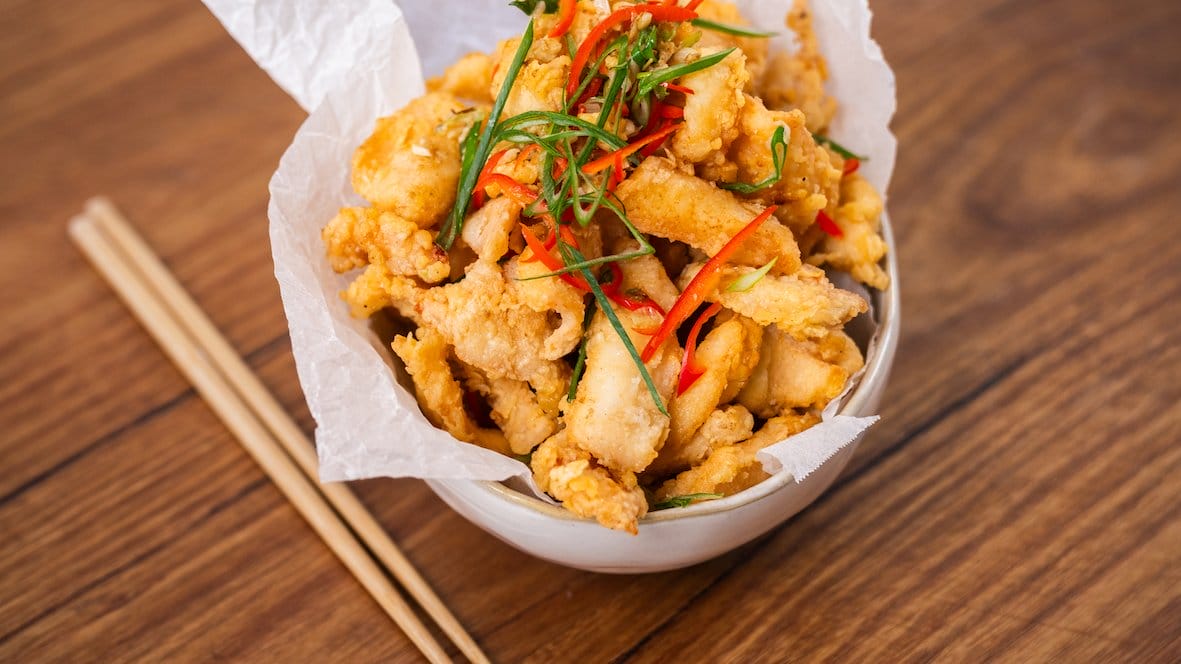
Can I use frozen squid for this recipe?
Although fresh squid is preferred for its superior texture and flavor, you can certainly use frozen squid. Ensure it’s properly thawed before cooking.
Why is my squid rubbery?
Overcooking is often the culprit behind rubbery squid. The key is to cook it quickly on high heat or slow-cook it for an extended period.
Can I bake the squid instead of frying it?
While baking is a healthier alternative, it may not provide the same level of crispiness as deep frying.
What other seasonings can I use for this dish?
Feel free to experiment with various spices like paprika, cayenne, or garlic powder to add a unique twist to your Salt and Pepper Squid.
How long can I store leftover Salt and Pepper Squid?
Ideally, consume it immediately for the best texture. However, leftovers can be stored in the refrigerator for up to 2 days.
Salt and Pepper Squid is more than just a dish – it’s an experience that brings together the simplicity of salt and pepper with the complexity of perfectly cooked squid. With the right techniques, high-quality ingredients, and a passion for culinary excellence, you can master this beloved seafood delicacy. So, what are you waiting for? It’s time to don your chef’s hat and embark on your Salt and Pepper Squid journey!

